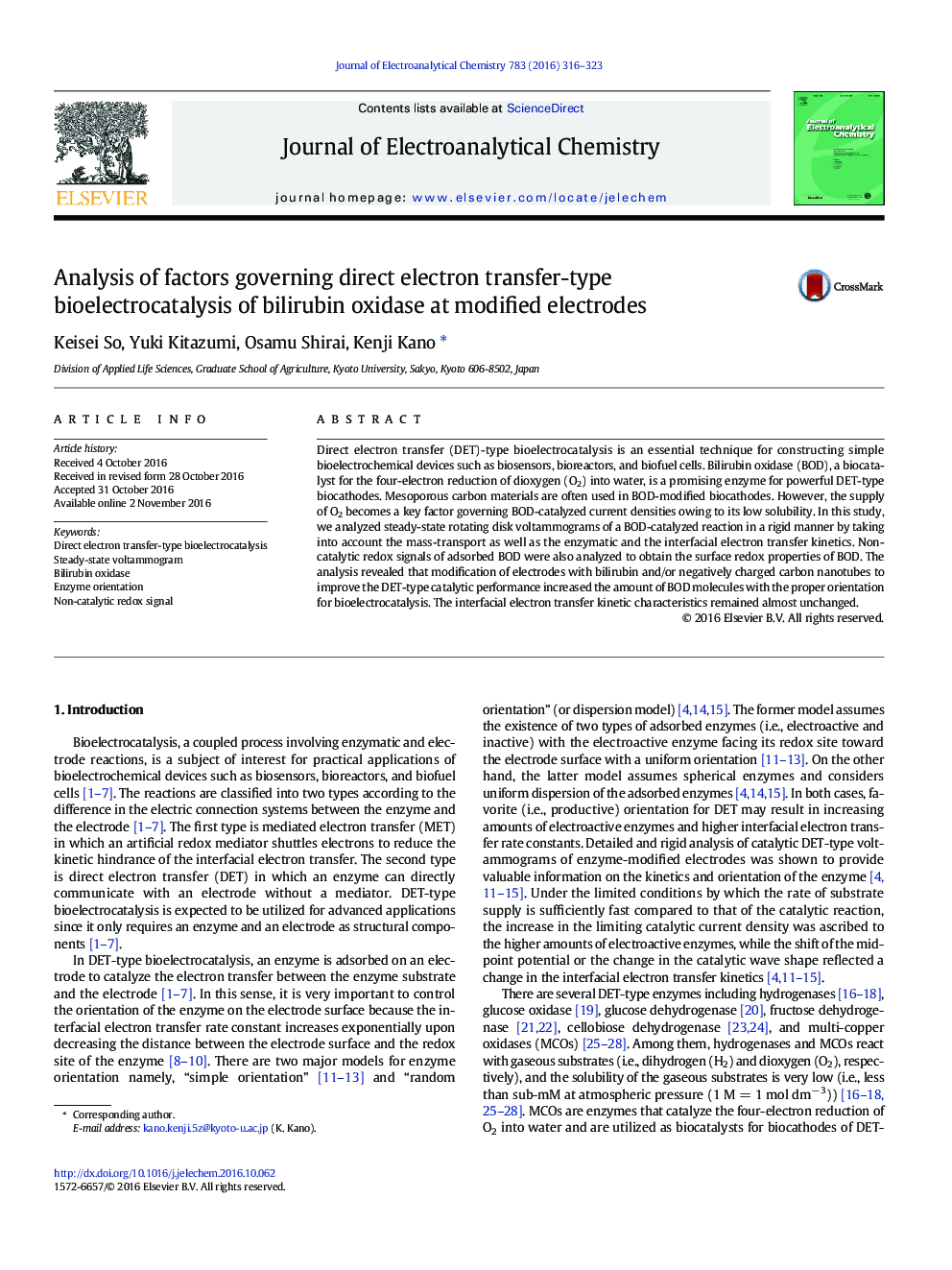| Article ID | Journal | Published Year | Pages | File Type |
|---|---|---|---|---|
| 6477132 | Journal of Electroanalytical Chemistry | 2016 | 8 Pages |
â¢Steady-state wave analysis of DET-type bioelectrocatalysis of BOD was performed.â¢Diffusion factor was minimized at low temperature and high pH to get reliable data.â¢Non-catalytic redox signals of BOD were also analyzed.â¢Information from non-catalytic waves was also incorporated in the analysis.â¢The analysis showed that two electrode modifications improved the orientation of BOD.
Direct electron transfer (DET)-type bioelectrocatalysis is an essential technique for constructing simple bioelectrochemical devices such as biosensors, bioreactors, and biofuel cells. Bilirubin oxidase (BOD), a biocatalyst for the four-electron reduction of dioxygen (O2) into water, is a promising enzyme for powerful DET-type biocathodes. Mesoporous carbon materials are often used in BOD-modified biocathodes. However, the supply of O2 becomes a key factor governing BOD-catalyzed current densities owing to its low solubility. In this study, we analyzed steady-state rotating disk voltammograms of a BOD-catalyzed reaction in a rigid manner by taking into account the mass-transport as well as the enzymatic and the interfacial electron transfer kinetics. Non-catalytic redox signals of adsorbed BOD were also analyzed to obtain the surface redox properties of BOD. The analysis revealed that modification of electrodes with bilirubin and/or negatively charged carbon nanotubes to improve the DET-type catalytic performance increased the amount of BOD molecules with the proper orientation for bioelectrocatalysis. The interfacial electron transfer kinetic characteristics remained almost unchanged.
Graphical abstractDownload high-res image (95KB)Download full-size image
